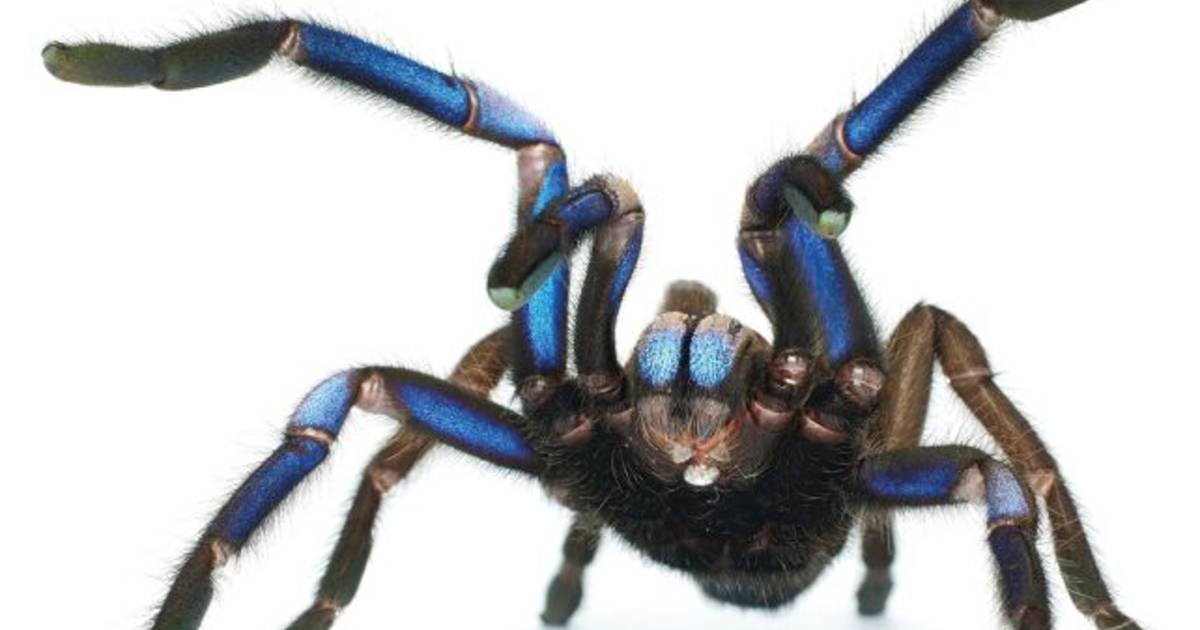
Discover the amazing new tarantula that shines in blue | Science and the planet
Scientists describe a new species of tarantula in the scientific journal ZooKeys. Not just any tarantula, the ones that shine a beautiful blue. You rarely encounter blue animals in nature, as they are one of the rarest colors. The dazzling spider, which you can find in Thailand, is named Chilobrachys natanicharum. It is the first tarantula ever found in the country’s mangroves.
Chilobrachys natanicharum, that’s the name of a new tarantula from the mangroves of Thailand that scientists have described. It is the first tarantula ever discovered in this area. According to the discoverers, this demonstrates the importance of preserving nature and protecting these types of habitats in which unique species live. The spider was known for some time in the exotic spider trade under the name “Electric-blue-tarantual” but was never described in the literature and scientists did not know where it came from.
Tarantula didn’t get this informal for nothing. Its legs, touch organs and mouthparts glow beautifully blue and violet when the spider lifts its legs. Tarantulas do this when they want to defend themselves or during courtship. Recent research has also shown that blue tarantulas can detect this vibrant color in their peers. Therefore, it is suspected that color may be used for communication between spiders. Although this still needs to be confirmed by scientific research.
Read more below the picture.

Blue is one of the rarest colors you can find in nature. For example, it is very difficult for plants to produce this pigment. For example, most blue flowers are the result of mixing other pigments. Blue color in animals is mainly found in birds, fish and insects. There are also a number of other known blue tarantulas.
The blue color of tarantulas is not the result of a pigment. There are little nanostructures on the spider that manipulate light so that you see the spider glowing in blue and violet. You also see this, for example, in the well-known morpho butterfly or in the feathers of the peacock. The fact that this occurs in tarantulas all over the world in different environments makes it an interesting topic for scientists to study.
Read more below the picture.

It was a Thai team led by arachnologist Naren Chomphuvuang of Khon Kaen University that discovered the new tarantula habitat during an expedition. “The first specimen we found was in a tree in a mangrove forest,” Chomphovoang says. “This tarantula lives in tree hollows. This does not make it easy to catch. You need to climb the tree and then try to get it out of the group of hollows. The fact that everything is wet and slippery does not help. During their trip, the team members walked in the evening and at night at low tide, and they managed From collecting two samples.
Chilobrachys natanicharum is one of the rarest tarantula species known, in part because the mangrove forests in which it lives are threatened by deforestation, and the blue sparkling tarantula displays a remarkable ability to adapt. They can thrive in tree burrows and the ground in evergreen forests. But in mangrove forests, their habitat is restricted to tree hollows due to the tides,” explains Chomphovuang. “We must do everything we can to save these animal species from extinction.”
look. This YouTuber shows Chilobrachys natancharum
“It has no stinger but a snout full of blades”: the bite of this evil insect is not without danger (+)
New tarantula with ‘golden locks’ discovered, and researchers keep location secret
◀ “We have every interest in combating the tiger mosquito”: How dangerous is the tiger mosquito in our country? (+)
Free unlimited access to Showbytes? Which can!
Log in or create an account and never miss a thing from the stars.

“Travel enthusiast. Alcohol lover. Friendly entrepreneur. Coffeeaholic. Award-winning writer.”
